|
Mark D. Hill
Gene M. Amdahl & John P. Morgridge
Professor Emeritus of Computer Sciences
|
 |
Amusement & Photos
My Erdös Number
is 3, because Paul Erdös wrote a paper with
- Michael E. Saks, who wrote a paper with
- Anne E. Condon, who wrote a paper with
- Mark D. Hill.
George E. P. Box, Statistician, 1987:
Essentially, all models are wrong, but some are useful.
William Gibson, Science Fiction Author, 1993:
The future is already here -- it's just not very evenly distributed.
Fred Schneider, Cornell Computer Scientist, 2014:
I strive to write papers that will be the first paper, the best paper,
or the last paper on a subject.
Doug Burger, Microsoft Research, 2014, from Microsoft Strategist Tren Giffen channeling investor
Howard Marks:
Disproportionate returns (in research and investing) come from correct non-consensus forecasts.
|
 |
A Fun Word: Skeuomorph
A derivative object that retains ornamental design cues from structures that were necessary in the original. Often used in technology, such common save icon depicting a now-obsolete floppy disk.
Stephen Hawking, Physicist:
The greatest enemy of knowledge is not ignorance,
it is the illusion of knowledge.
The Great Questions by Robert Fulghum:
Often expressed in anger (e.g., parent to child),
but better used for philosophical enquiry.
- What on earth have you done?
- What will you think of next?
- Who do you think you are?
Fred Brooks (quoted by Almasi & Gottlieb):
Einstein argued that there must be simplied explanations of nature,
because God is not capricious or arbitrary. No such faith comforts the
software engineer.
Norman Augustine (quoted by Gray & Reuter):
Software is like entropy. It is difficult to grasp, weights nothing,
and obeys The Second Law of Thermodynamics; i.e., it always increases.
Douglas Adams, author, futurist:
There is a theory which states that if ever anyone discovers exactly what
the universe is for and why it is here, it will instantly disappear and
be replaced by something even more bizarre and inexplicable. There is
another theory which states that this has already happened.
Jack Kilby, co-inventor of the integrated circuit, after being
introduced for his 2000 Nobel Prize as having launched
the global digital revolution:
When I hear that kind of thing, it reminds me of what the beaver told
the rabbit as they stood at the base of Hoover Dam: "No, I didn't build
it myself, but it's based on an idea of mine."
Joe Biden:
Don't tell me what you value, show me your budget, and I'll tell you what you value.
(Robert) Zak's Razor, 1997:
- Architects say, "It COULD work."
- Implementors say, "It SHOULD work."
- Verifiers say, "It WILL work."
A 21st Century Update, 2007,
by Shailender Chaudhry, Robert Cypher, and Anders Landin:
- Implementors say, "It WON'T work."
- Verifiers say, "It DOESN'T work."
- Architects say, "It MUST work."
Isaac Asimov, 1983 introduction to "The Caves of Steel" (1953), 1st book of "The Robot Novels":
R.U.R. added its somber view to that of the even more famous Frankenstein, in which the creation of another kind of artificial human being also ended in the disaster, though on a more limited scale. Following these examples, it became very common, in the 1920s and 1930s, to picture robots as dangerous devices that invariably destroyed their creators. The moral was pointed out over and over again that "there are some things Man was not meant to know."
Even as a youngster, though, I could not bring myself to believe that if knowledge presented danger, the solution was ignorance. To me, it always seemed that the solution had to be wisdom. You did not refuse to look at danger, rather you learned how to handle it safely.
After all, this had been the human challenge since a certain group of primates became human in the first place. Any technological advance can be dangerous. Fire was dangerous from the start, and so (even more so) was speech—and both are still dangerous to this day—but human beings would not be human without them.
On Parallelism
in Electronic Computing With Apologies to the Author of Genesis,
Mark D. Hill,
Introductory Remarks for Single-Threaded versus Multi-Threaded Debate vs. Yale Patt, FCRC/ISCA/CARD, Phoenix, AZ, June 2019.
Photos
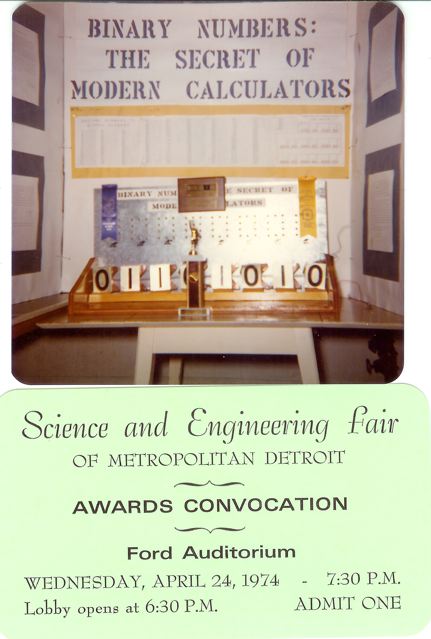
Mark's 1974 Science Fair Project -- a Mechanical Binary Adder.
Click
for 3.7MB image.
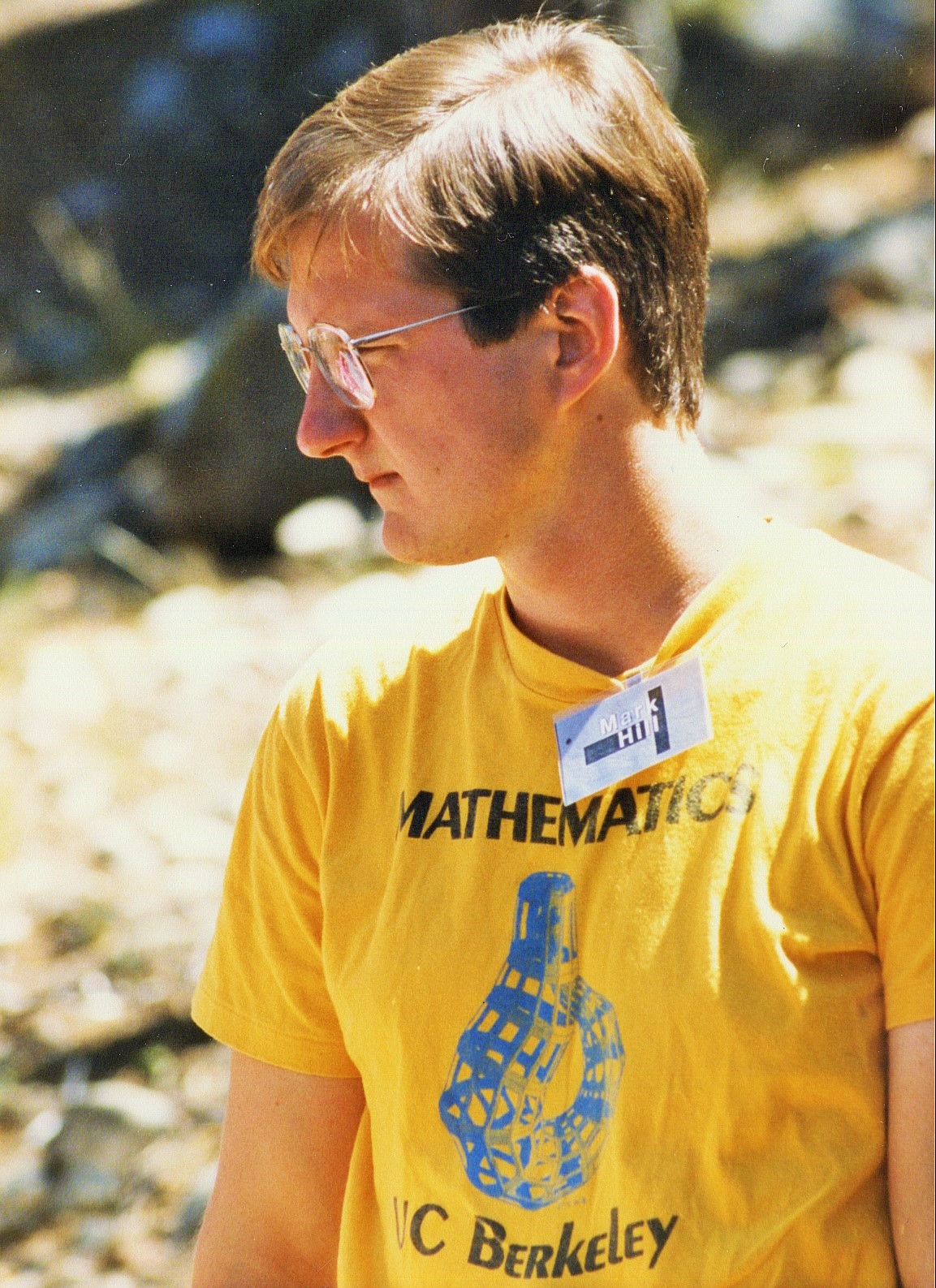
Mark, UC Berkeley CS grad student (~1983)
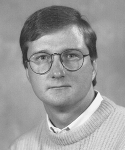
Mark, fresh from his Ph.D. (1988)
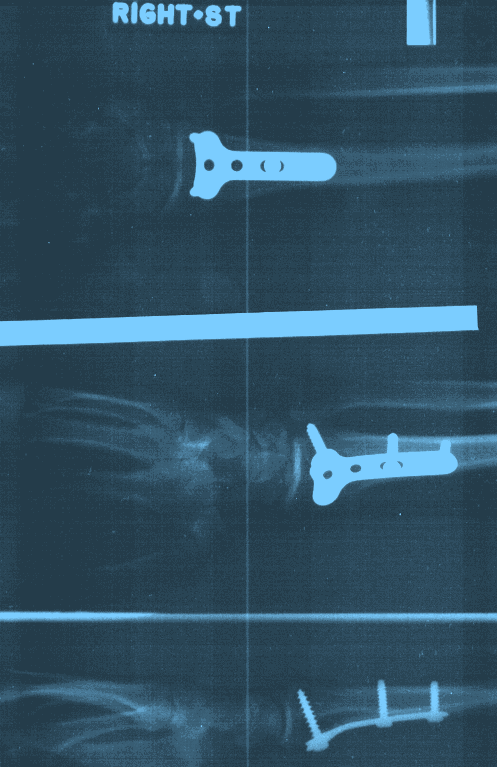
Proof that Mark is into Hardware (wrist after 1995 bike accident)

Many University of Wisconsin Computer Architects (5/1998):
James E. Smith, James R. Goodman, Mark D. Hill, Gurindar S. Sohi, and David A. Wood.
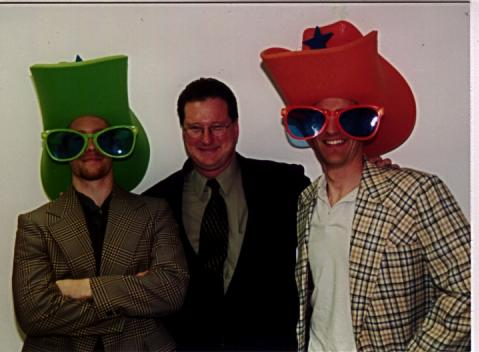
Mark with Univ. of Texas Professors (1999 in Austin)
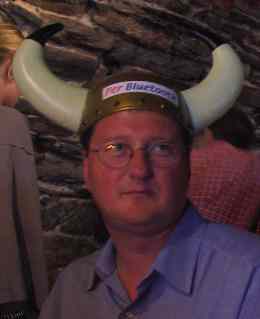
Mark as Contemplative Viking (2001 ISCA banquet)


Caricature of Mark (right) by Enric Pereda, La Rambla,
Barcelona, 9/2002.
Click Here
for 257KB image.

Mark D. Hill with Hardware, 2006 Photo by Bob Rashid.
Click Here
for 35MB tif image.
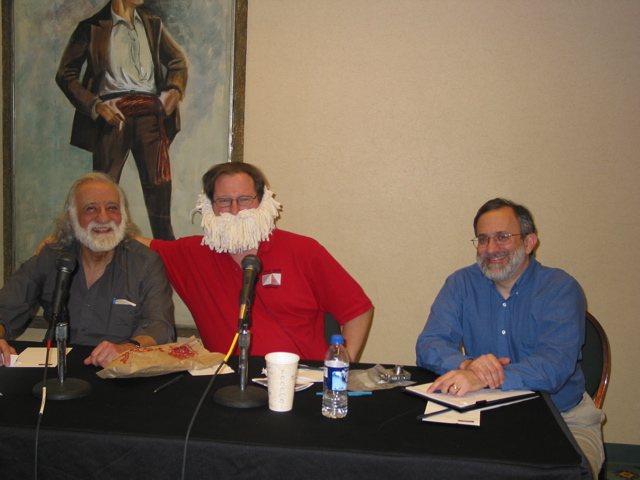
Yale Patt, Yale Patt (?), and moderator Joel Emer (Single- vs. Multi-Thread Debate at CARD/HPCA 2007)
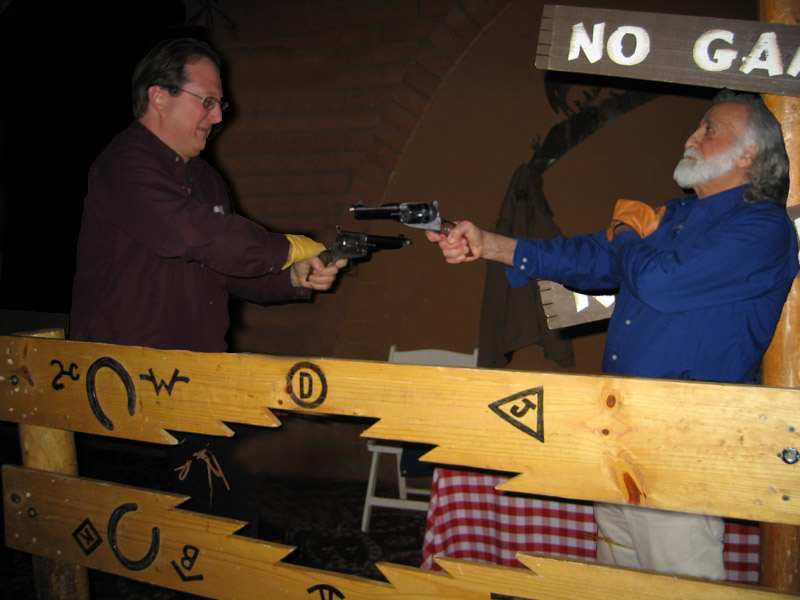
Wild-West-style resolution of the CARD 2007 debate (photoshopped by Mike Marty)

Mark Hill (right) Drafted to Dance at VLDB Banquet (8/2008)

Some Wisconsin Computer Architects with Bucky Badger (10/2008):
Brad Beckmann, Kevin Moore, David Wood, Bucky Badger, Steve Scott,
Babak Falsafi, Mark Hill, Guri Sohi, and Mike Marty.
Click
for 2MB image.

Mark Hill and Sue Dentinger in Giant Gerbil Wheel at Wonderball
(08/2010),
a benefit for the Madison Children's Museum.
Click
for 8MB image.

Mark Hill with Cray-1 at Computer History Museum, Mountain View, CA
(12/2012),
Click
for large image.

Mark Hill in Google Street View Car at Computer History Museum, Mountain View, CA
(12/2012).

Some Computer Architects at Caesarea (left to right):
David Kaeli, Josep Torrellas, Jim Smith, Mark Hill, Doug Burger,
Jim Goodman, Avi Mendelson, Luiz Barroso, and Uri Weiser
(6/2013).
Click
for 2.1MB photoshopped image.
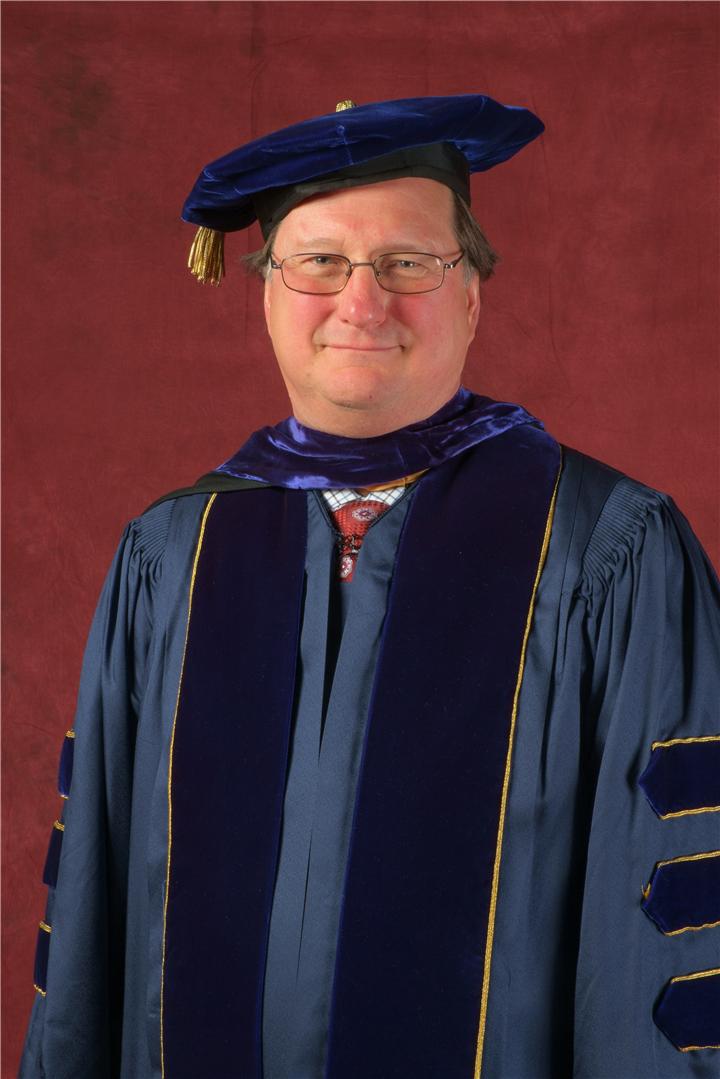
Mark in Ph.D. Robes (5/2014).
Click
for 7.5MB image.
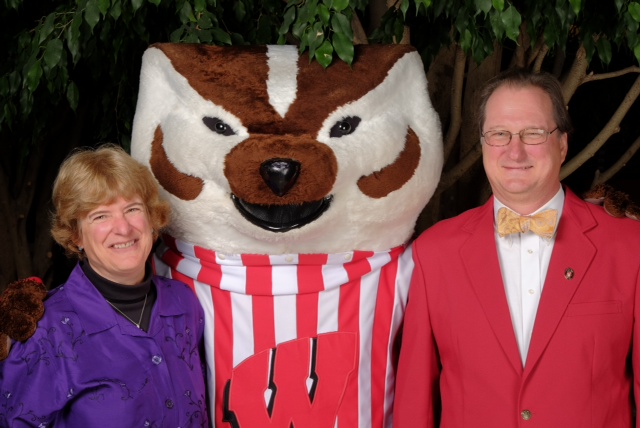
Sue Dentinger, Bucky Badger, & Mark Hill at UW CS Dept. 50th Anniversary (9/2014).
Click
for 5MB image.
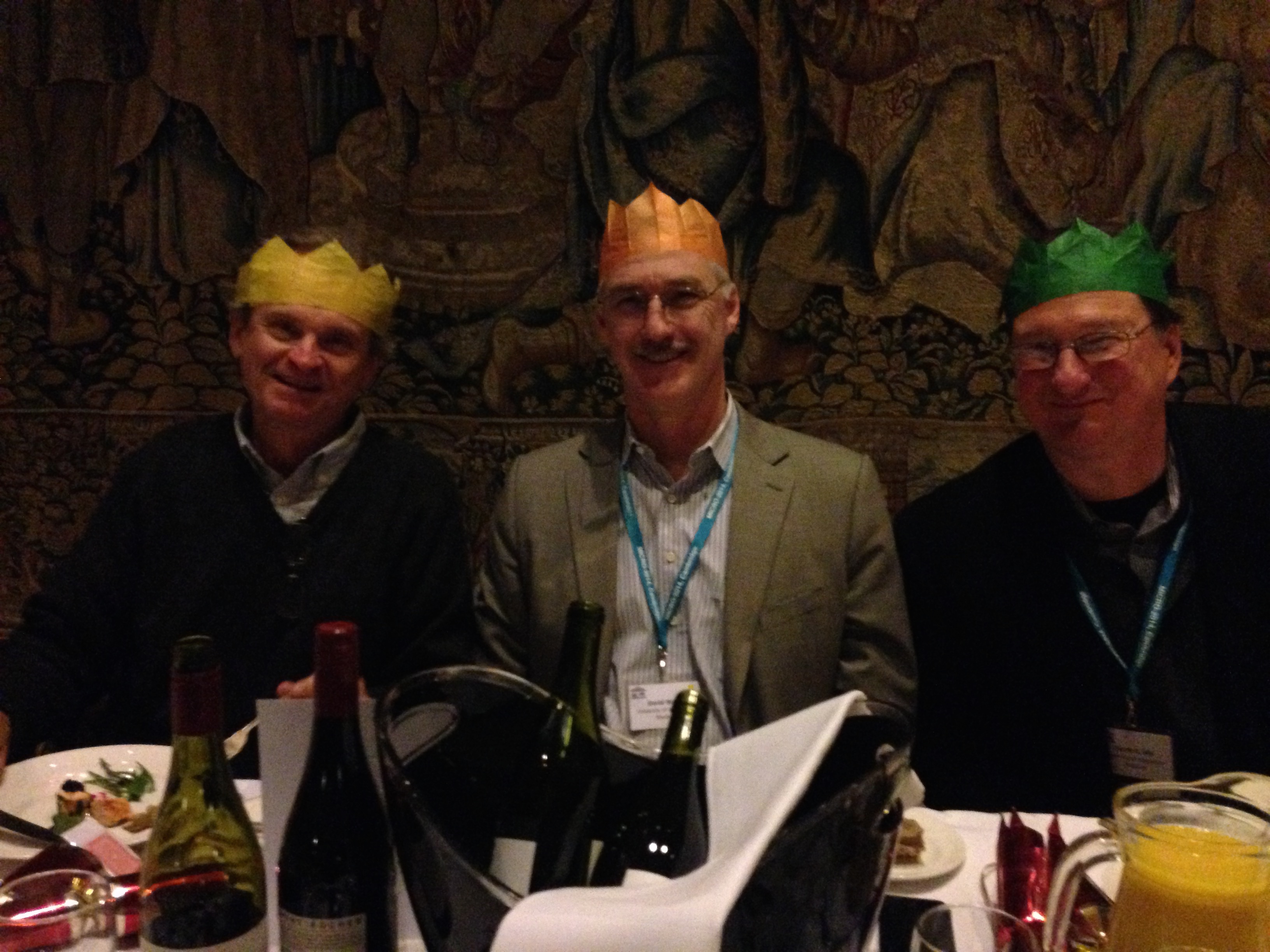
Wisconsin Professors Jim Smith (left), David Wood, & Mark Hill at MICRO'14
Banquet in King's College, Cambridge (It looked like Hogwarts) (12/2014).
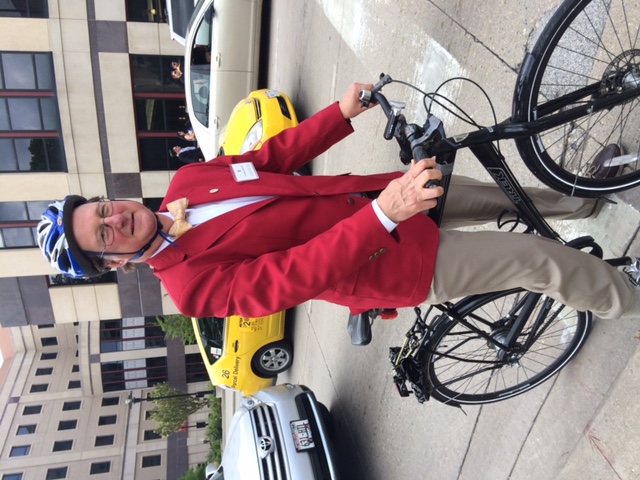
Mark Hill Enroute to CS Graduation Reception (5/2015).
Click
for 2.5MB image.
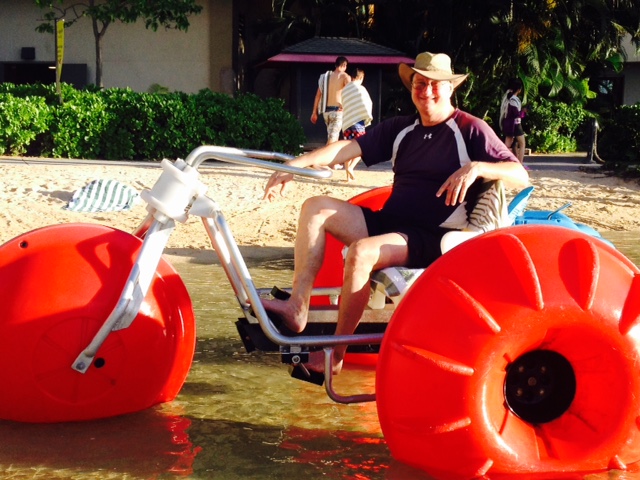
Mark Hill at MICRO in Hawaii (12/2015).
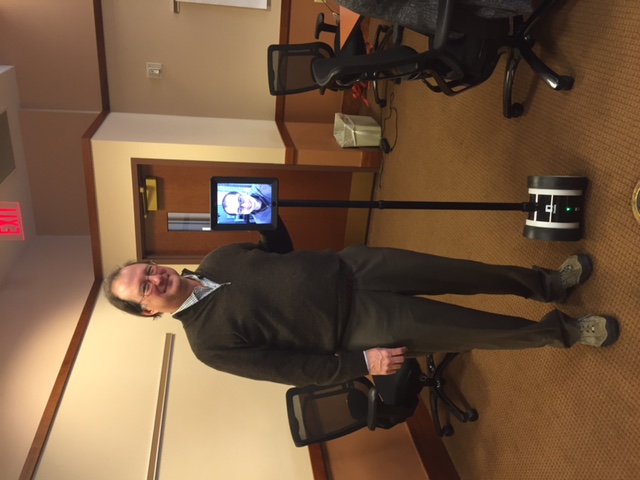
Mark Hill with Virtual Bilge Multu at Department Retreat (1/2016).
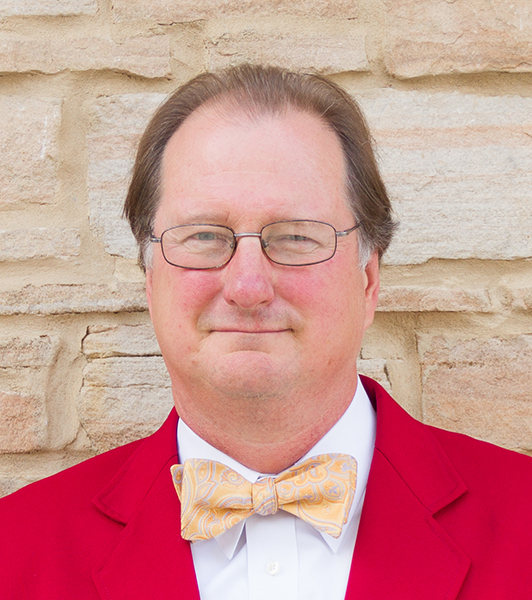
Mark Hill as Department Chair (8/2016).
Click
for higher-resolution image.
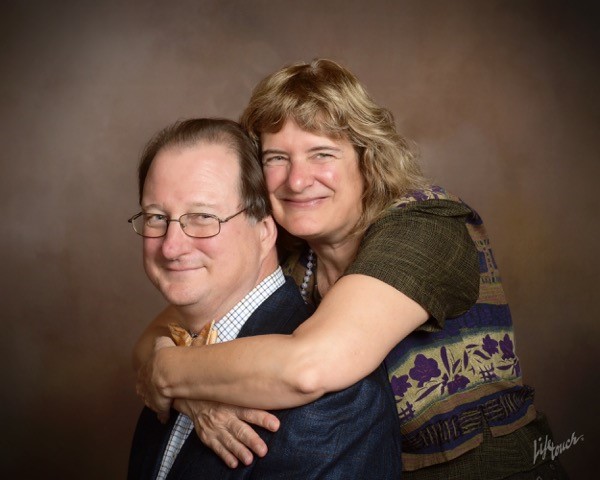
Mark Hill and Sue Dentinger after 30 Years of Marriage (9/2016).
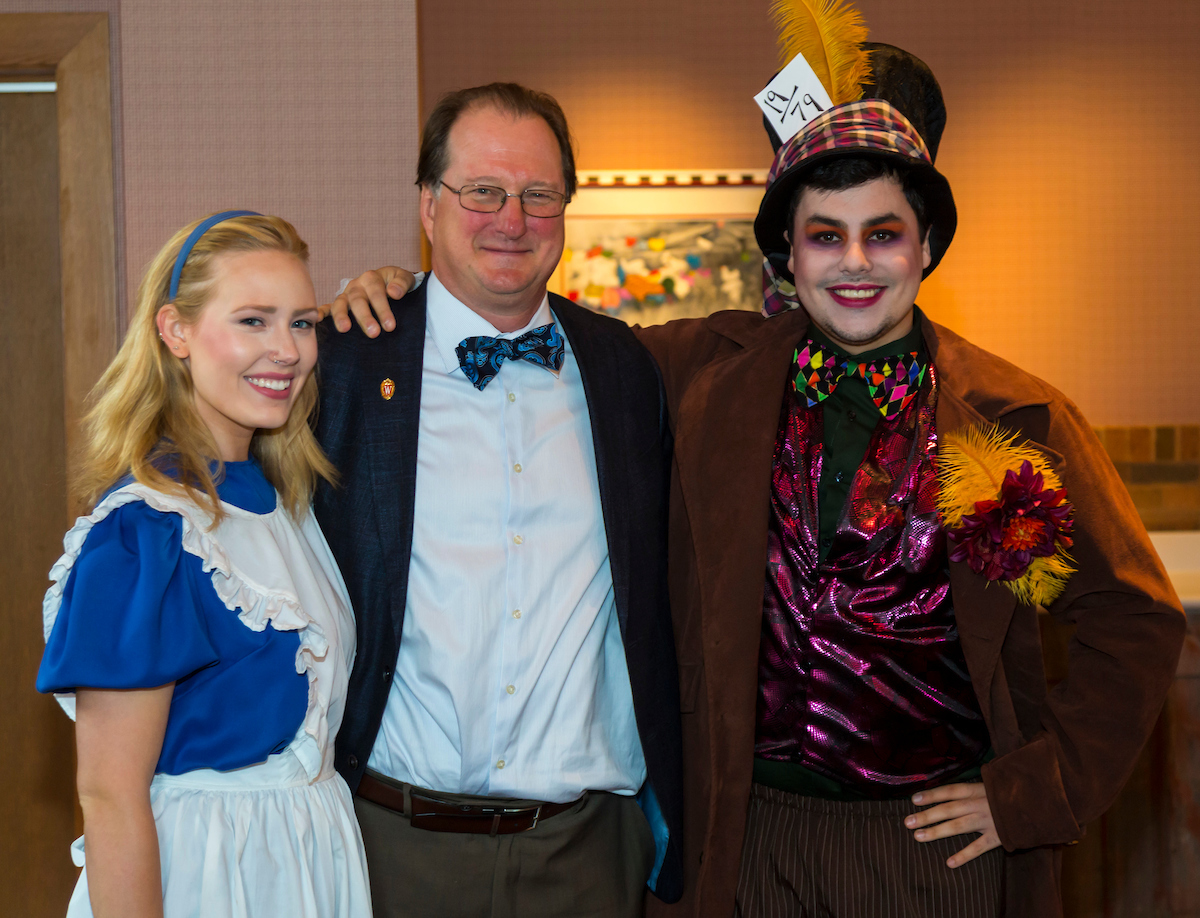
Mark Hill at Epic Wonderland with Alice and the Mad Hatter (9/2016).
Click
for higher-resolution image.
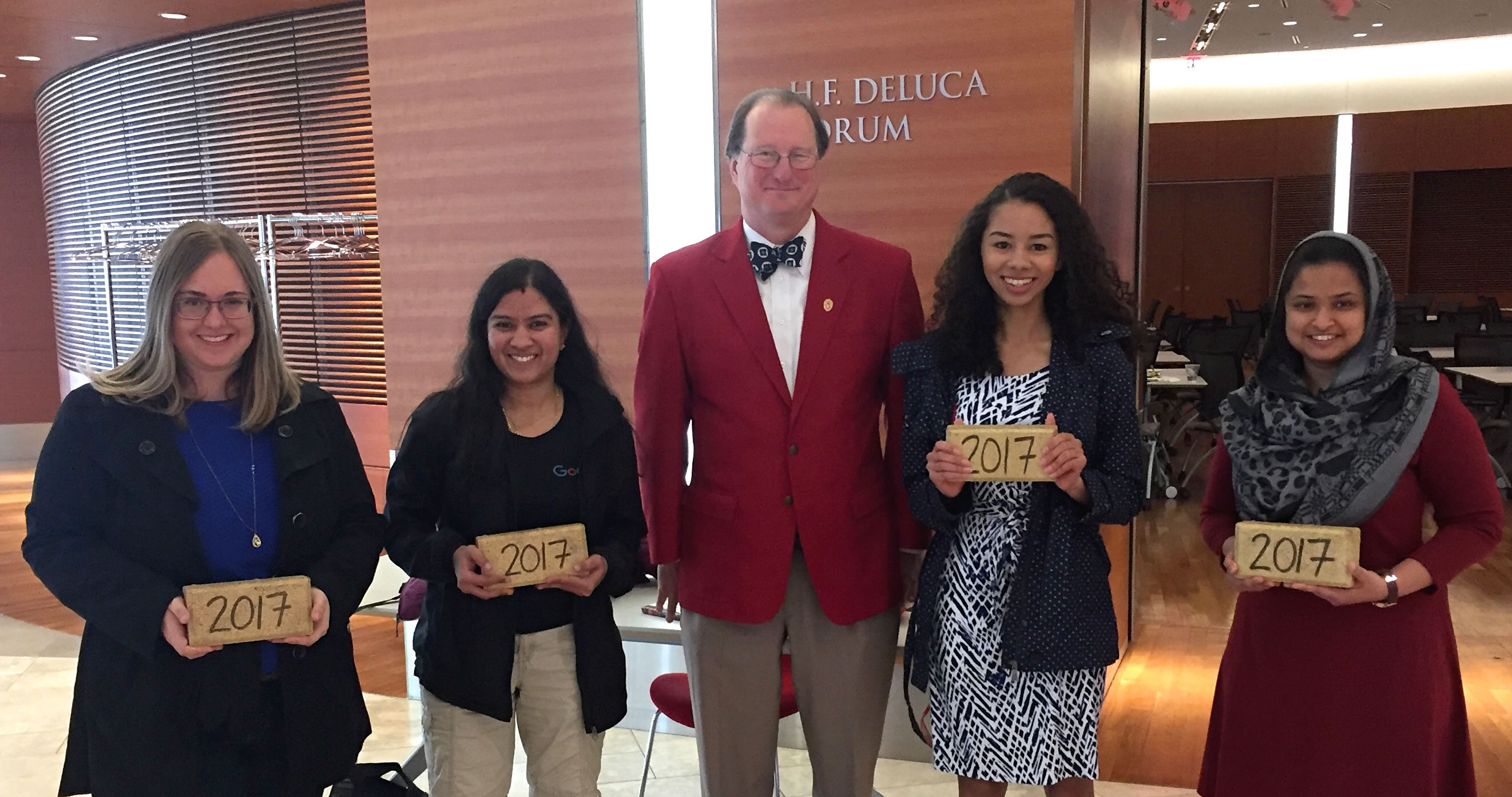
Dept. Chair Mark Hill with Women of the ACM (WACM) Award Winners Alayna Truttmann,
Meena Syamkumar, Rita Marie Roloff, & Nafisah Islam, CS Awards Ceremony (5/2017).

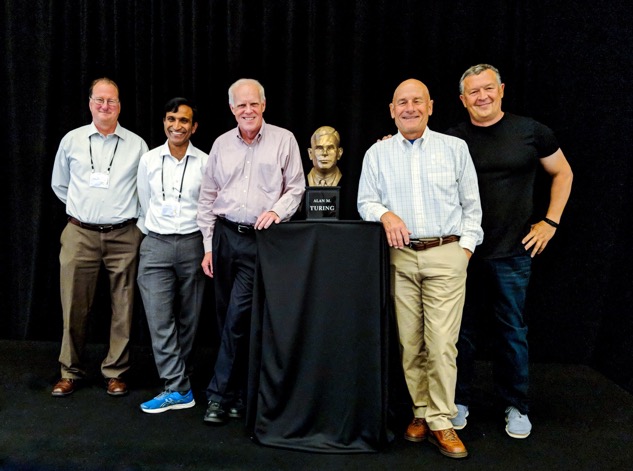
Mark Hill, Murali Annavaram, Turing Winner John Hennessy, Alan Turing Bust
Turing Winner David Patterson, and Luiz Barroso, ISCA (6/2018).
Click
for higher-resolution image.
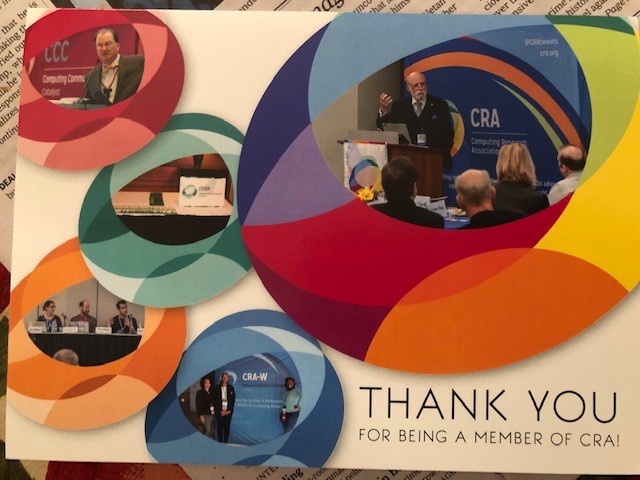
CCC Chair Mark Hill on CRA Holiday Card with Vint Cerf and others (12/2018).
|































